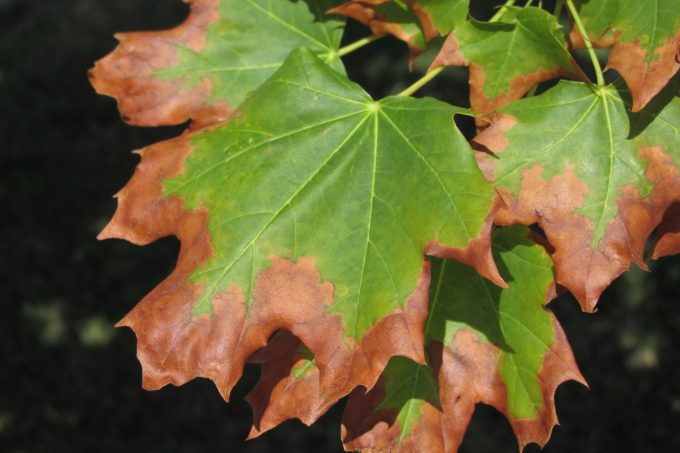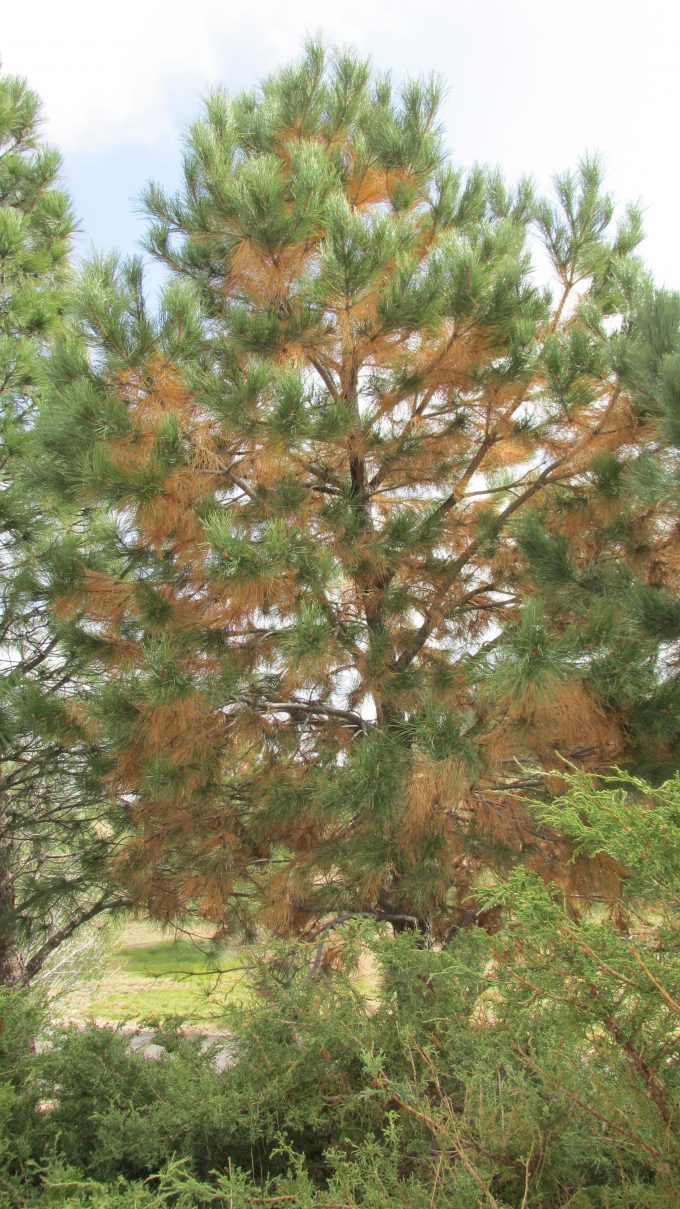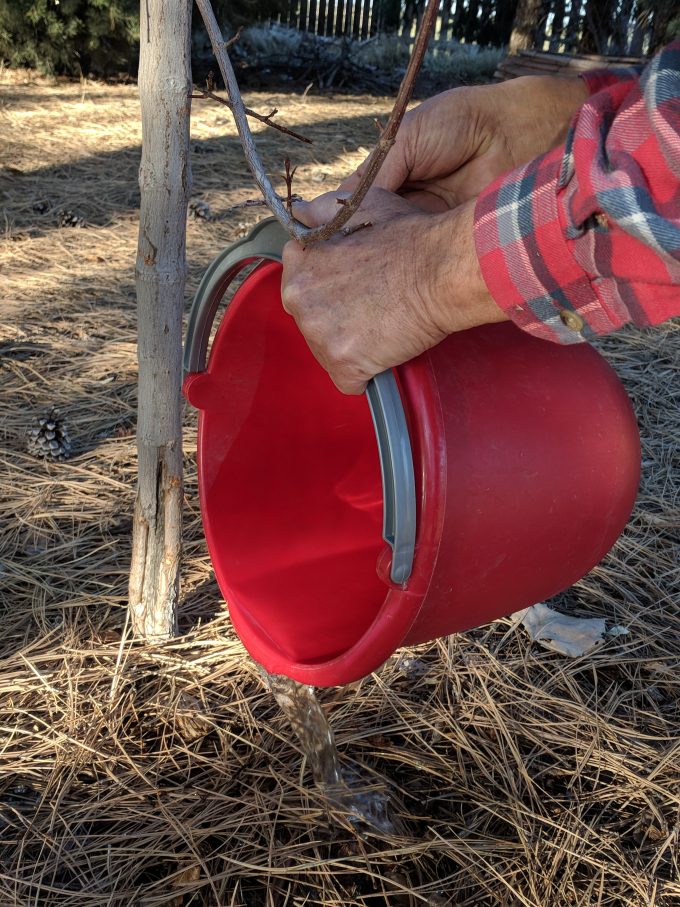Like most gardeners, I’m convinced that Mother Nature enjoys playing tricks on us. Like most gardeners, I’m convinced that Mother Nature likes to play tricks on us. While we had to show a little patience, waiting for things to dry up enough to get out and garden, our trees, shrubs, and perennials sure loved the moisture!
But then the heat came. And while we usually remember to keep our perennials well-watered, our trees and shrubs get overlooked. And they are paying the price.
It’s called “leaf scorch”
When woody plants can’t deliver enough water to the tips of their leaves, the leaf margins begin to collapse. Put simply, they die and dry up. The tree or shrub needs more water than the root system can deliver.
Maybe during our long run of 90-degree days, the tree didn’t get as much water as it needed at the time. Or perhaps the problem began last winter when the tree or shrub wasn’t receiving any winter watering to keep the root system healthy. Maybe that’s when and why many of the roots died. Now the remaining roots can’t deliver.
We see the effects of inadequate winter watering several months later in mid-summer. Trees, more than shrubs, have an amazing ability to operate on stored energy…. for a while. Branches and top growth appear to be healthy in June. But as persistent July heat sets in, problems arise. So many roots dried up and died over the winter, the remaining root system just isn’t strong enough to keep the tree healthy in the heat.
Shrubs get leaf scorch, too.
When leaves on a shrub dry from the edges inward, it’s most likely leaf scorch, not disease, that’s the culprit.
A single season of leaf scorch alone certainly isn’t fatal, but it does cause stress to the tree or shrub. It means that plants are now going into winter, telling you that they’re not especially happy. Too little water for too many seasons can accumulate and cause serious, permanent damage.
A note on pine needle shed
Just for the record, when the interior needles on pine trees dry up and fall, that is not a form of leaf scorch. It’s part of the expected behavior of certain conifers. The inner-most needles are the oldest. They’re getting the least light. Their job is done, so the trees let them go.
Some of my pines shed once a year. Some shed twice. As long as the tips of the branches show healthy new growth, there’s generally no cause for worry.
How can we prevent leaf scorch?
The answer is proper watering, summer and winter. Young trees that are getting watered in summer only when the lawn gets watered aren’t getting nearly enough moisture.
On mild mornings in winter, use a sprinkler that can deliver a small watering pattern when the soil isn’t frozen. Soil needles can also be used. Focus on watering the area directly above the tree’s root system. If necessary, move the sprinkler head around the tree’s drip line (just beneath the outer-most branches) and slowly deliver water directly to the root zone.
Winter watering with a bucket can also be effective if you’d rather not drag and then drain a garden hose.
After watering, gently check with a sharp trowel around the edge of the root ball to make sure the water is getting down at least 12″.
When we don’t get soaking snow that gets down that deep, winter watering on mild mornings can make all the difference for your trees and shrubs. For additional help with leaf scorch, stop by Tagawa Gardens today and chat with one of our advisors.









